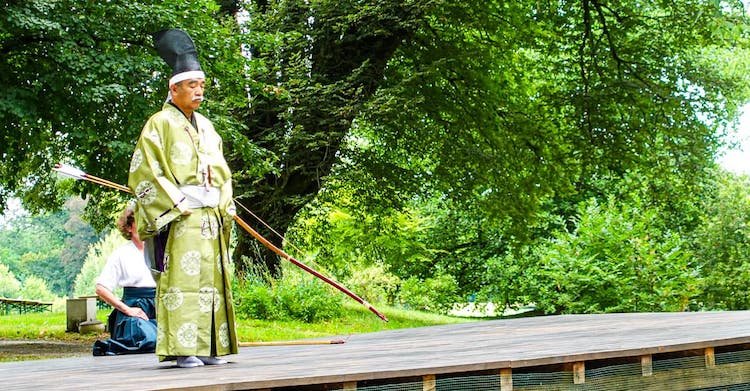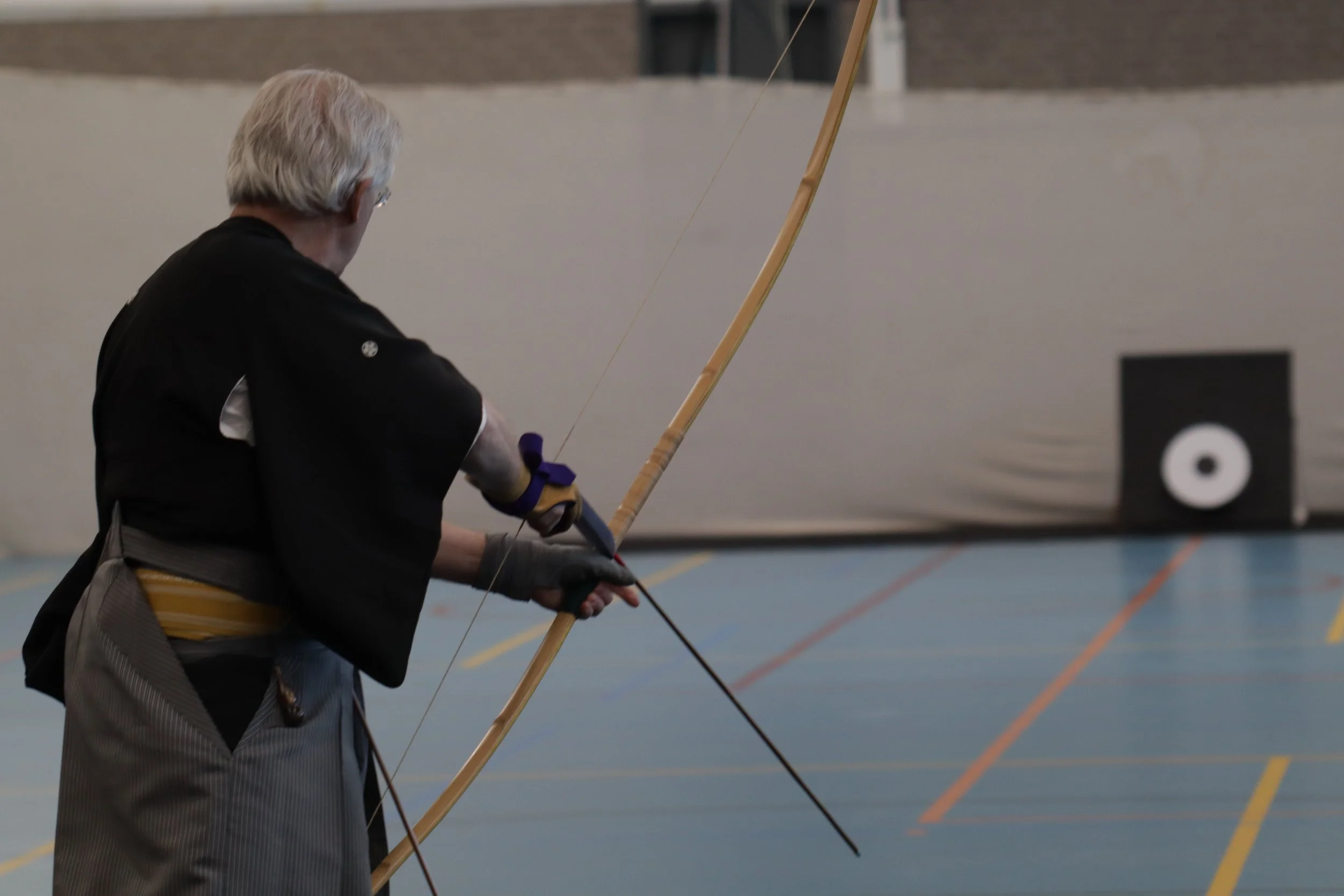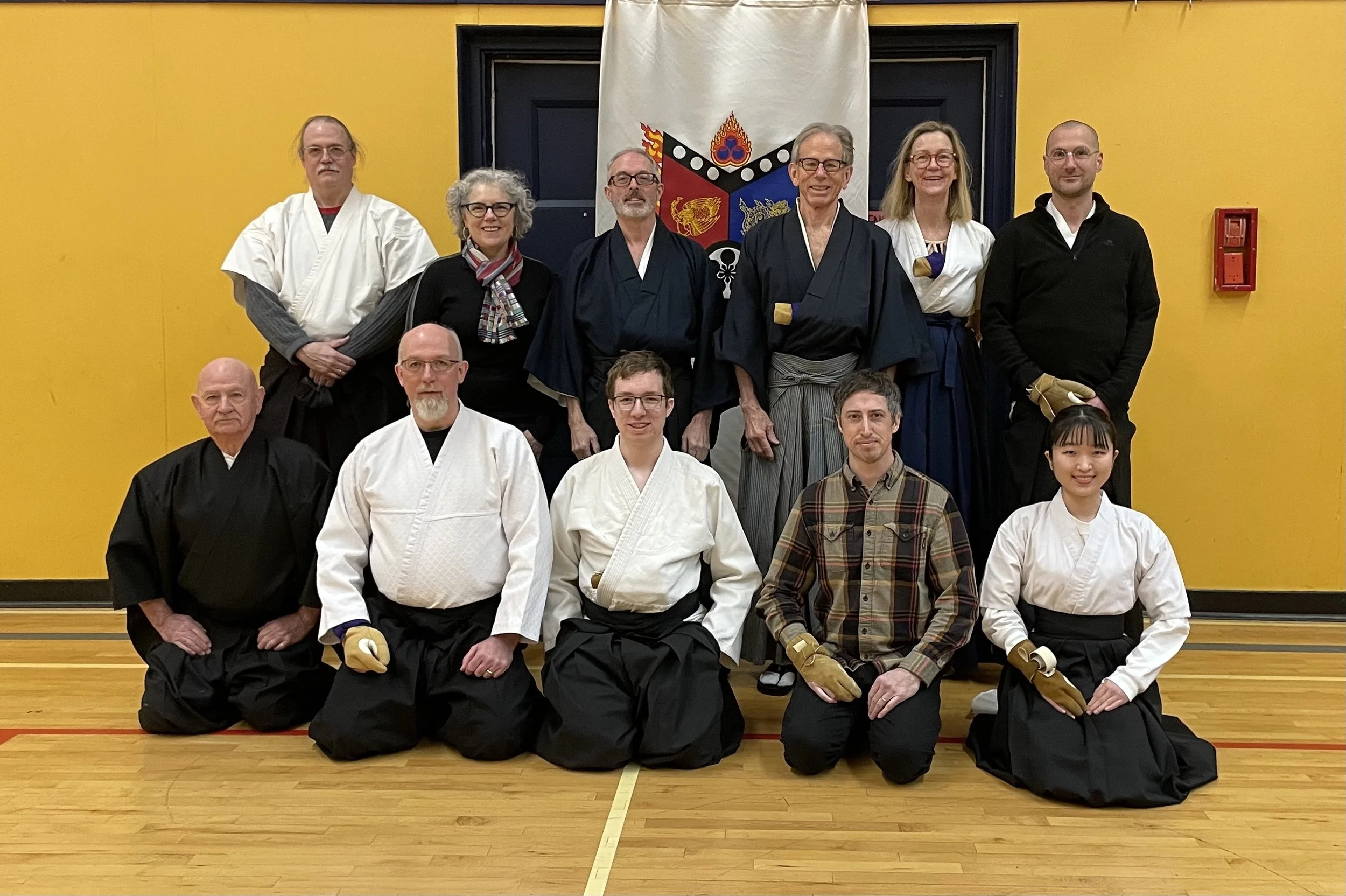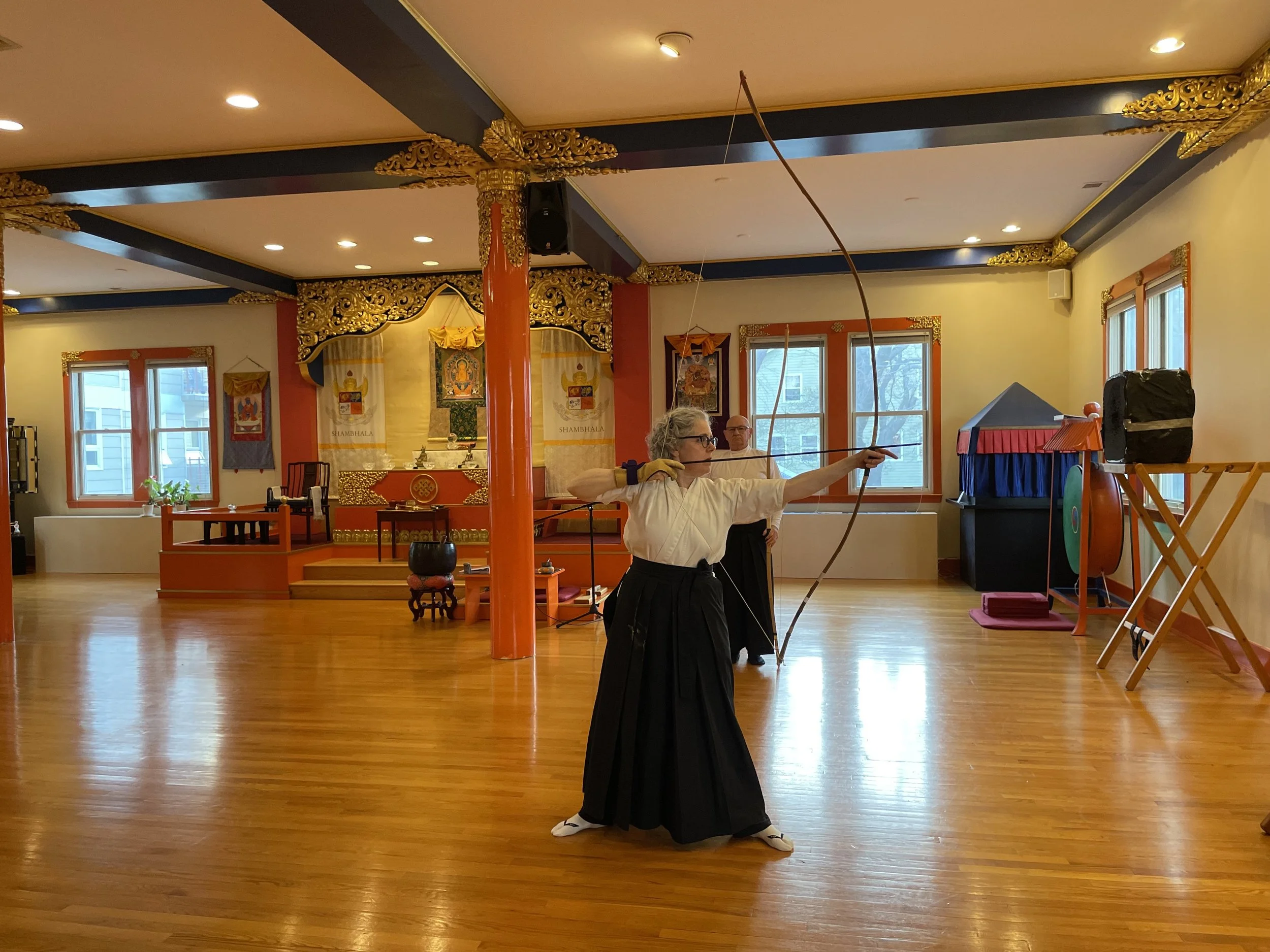
Lineage & History
History
Kozan Kyudojo is affiliated with Zenko International and Oko Europe, following the meditative kyudo tradition of the Heki ryu Bishu Chikurin ha school, after the teachings of Kanjuro Shibata XX Sendai.
His heir, Shibata Kanjuro XXI, Sensei, is our teacher.
There is no hierarchy in the dojos aside from this.
1. Japanese Archery
2. Chikurin-Ha
3. Kozan
1. Kyudo: the art of Japanese archery
Once one of the traditional martial arts of Japanese warriors (samurai), the bow increasingly lost its military significance when firearms were introduced in the 16th century. During the long peacetime of the Edo period (1603-1868) archery based on technical skills (kyu-jutsu) became a major spiritual exercise of the samurai, the "way of the bow" KYU DO (KYU = bow, DO = way).
The simple elegance of the movement, the beauty of the bow and the arrows and the dignity of the shooter exert a great fascination for many people.
From the outside, Kyudo just seems to be just archery. Tightening the bow and then aiming at a target resembles a skill exercise, but Kyudo is not a sport.
The technical process (the "Seven Coordinations") can be learned in a few weeks. The increasing mastery of form, its deepening and refinement into art, opens up an exciting development of one's own personality over the years. Over time, you learn mindfulness, concentration and achieve inner peace and tranquility.
In our dojos Kyudo is practiced at the school "Heki-ryu Bischu Chikurin-ha" according to the teachings of the Shibata family from Kyoto / Japan.
Kyudo can equally be practiced by women and men from about 13 years old and without age limit. Physical strength is irrelevant to the exercise.
2. Chikurin-ha
(source: Oko Europe)
The history of the Kyudo school "Heki ryu Bishu Chikurin ha" starts around the year 1600. The name refers on the one hand to Heki Yazaemon Noritsugu and therefore to the tradition of Heki on the other hand to the true founder of the school, the monk Chikurinbo Josei. (see: Chikurinbo Josei)
Originally Heki ryu Bishu Chikurin ha was native in the area of Nagoya, whereon the name part “Bishu” refers to.
Kyudo has evolved partly from a samurai and military discipline which was used in wartime, and partly from a strictly formalized ceremonial archery which was practiced already in the time of Konfuzius in China. Still until today there exist many style elements – particularly in the school Chikurin ha – which refer directly to the ancient combat situation.
The foundation of the Kyudo practice are the ‘seven coordinations’, a series of prescribed movements, which exist since the very beginning of the school. They define the whole shooting process. The student strives for perfection to perform them as precisely as possible, while remaining relaxed, balanced, and centred.
The Chikurin ha school of Kyudo is not a member of the Internatinal Kyudo Federation (IKYF) because it has no system of degrees, there are no exams to attain a Dan. The goal of the practice is to Advanced students support the beginners on their way.
The Dojos are structured in two umbrella organizations: one in Europe - OKO- , and one in North America - ZENKO). Sitting meditation is practiced in many Dojos additionally to Kyudo.
More than 20 Dojos exist in Europe, namely in Germany, France, Austria, Switzerland, Netherlands, Spain and Czech republic. Additional Dojos exist in US and in Canada. In Japan Chikurin ha is only rarely represented.
Imperial Bowmakers
The first Shibata Kanjuro moved to the city of Kyoto in the 16th century. SInce then, the Shibata family has maintained an unbroken lineage as master archers and bow makers for the Shogunate and daimyo families.
This position was elevated in 1889, when Kanjuro Shibata XVIII was appointed as the official Bowmaker to the Emperor of Japan, or Onyumishi
Since then, that title has continued through the generations. The head of our lineage, Kanjuro Shibata XXI, is the current Onyumishi to the Japanese Royal family.
As such, his duties include making the very special ceremonial yumi, or sacred bows, for the purification and consecration of the shrine at Ise Jingu, the principal temple of the Shinto religion. That opportunity arises when the shrine is rebuilt adjacent to its previous location - every twenty years. Shibata Sensei XXI built the yumi for the 2013 Shikinen Sengu ceremony.
3. Kozan Kyudojo, Halifax
Kozan is the name of this school’s dojo in Halifax, Nova Scotia. “Kozan” means “tiger mountain” or “mountain tiger”. Kanjuro Shibata XX, Sendai, bestowed this name on the dojo. In the mid-80ies was the second dojo established outside of the main dojo in Boulder, which is called Zenko.
Today Kozan Kyudojo is led by Sam West.
Please refer to the Events Page for information on practice times, or how to start the journey of Kyudo practice.
Lineage
Shibata Kanjuro XXI
Shibata Kanjuro XXI is the official head of Zenko International, the multi-national umbrella organization of Shibata-style kyudo. Shibata-sensei is a 21st generation master bowmaker, archer, and is also a 4th generation official bowmaker to the Emperor of Japan in the Shibata family lineage.
Shibata Kanjuro XX (1921-2013)
Shibata Kanjuro XX was the 20th in a line of consecutive master bowmakers and kyudo teacher. Shibata served as the official bowmaker to the Emperor of Japan from 1959 until 1994. He founded Zenko Kyudojo in Boulder, Colorado.
Kanjuro Shibata XIX (1880-1959)
Kanjuro Shibata XIX was the grandfather of Shibata Sensei XX. Most Japanese traditions follow the system called ie, a system of passing traditions from father-to-son. However, Shibata Sensei XX's father elected not to be a bowmaker--so at the age of eight, Shibata Sensei XX became the student of Shibata XIX.
Further historical background and details:
https://www.kyudo.org/index.php/en/kyudo-manual/history-of-our-school.html
“Warriorship is a continual journey. To be a warrior is to learn to be genuine in every moment of your life.“
— Chögyam Trungpa Rinpoche








